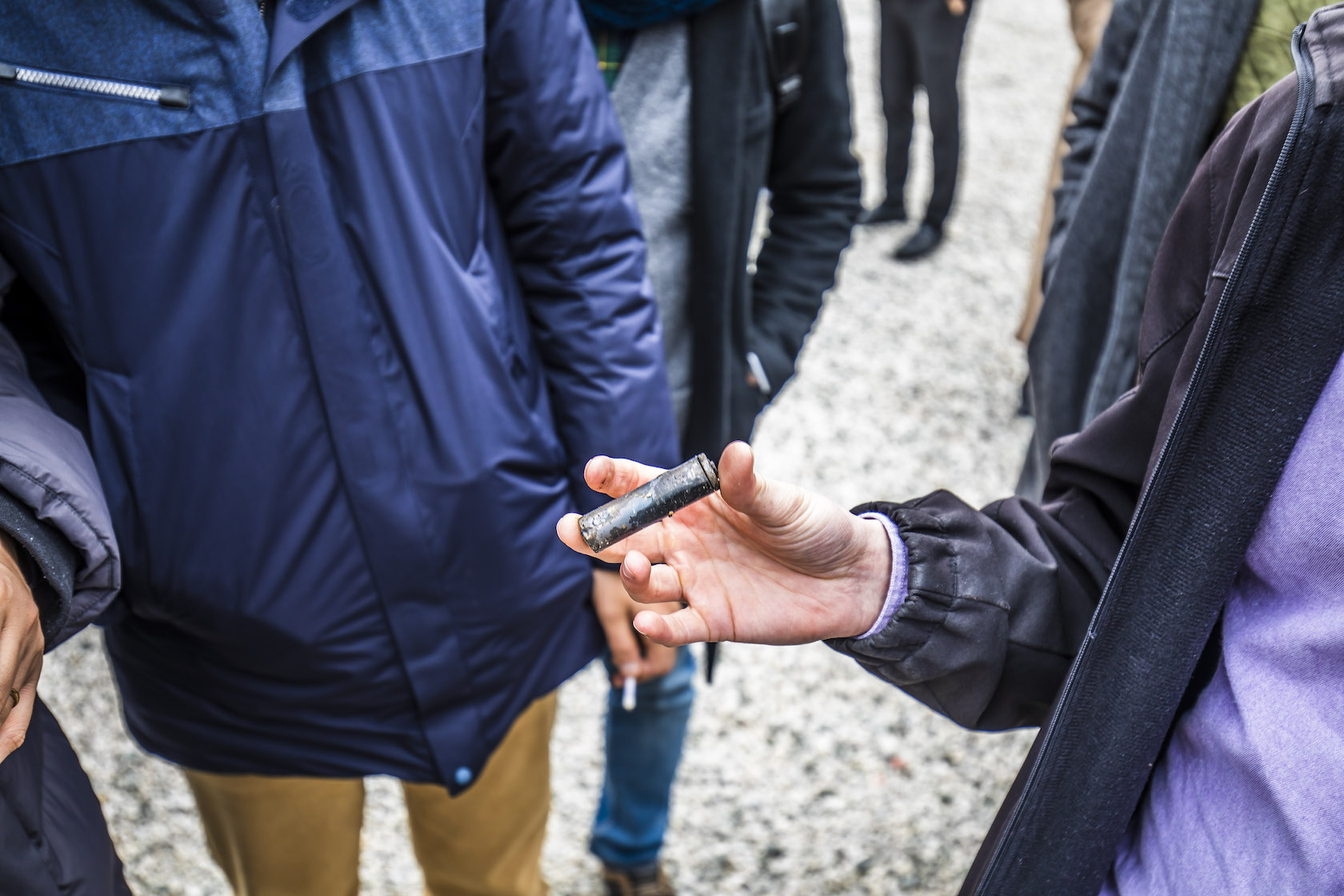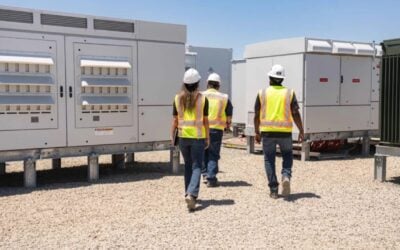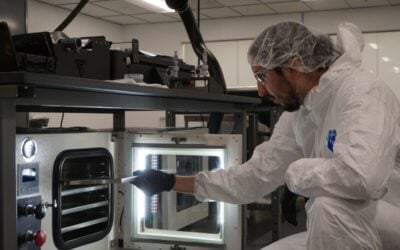
The energy storage industry should be well prepared to deal with failure in lithium-ion battery systems so that thermal runaway in a single battery cell never becomes a fire or explosion.
Day Two of the Energy Storage Summit USA 2021, hosted by our publisher Solar Media, began with a discussion of safe energy storage and how to safely deploy lithium-ion energy storage system (ESS) technology into urban environments.
Enjoy 12 months of exclusive analysis
- Regular insight and analysis of the industry’s biggest developments
- In-depth interviews with the industry’s leading figures
- Annual digital subscription to the PV Tech Power journal
- Discounts on Solar Media’s portfolio of events, in-person and virtual
“If it’s predictable, it’s preventable,” the panel’s chair, Matthew Paiss of Pacific North-west National Laboratory, said. Paiss is a former firefighter who sits on various safety codes and standards development technical committees and is a technical advisor to PNNL, which is funded by the US Department of Energy (DoE).
Panellist Per Onnerud, chief technical officer at Cadenza Innovation, a start-up which has developed a novel ‘Supercell’ battery module structure that prevents thermal runaway in a lithium cell from cascading into other cells and causing fires, said that statistically, some failures will always happen.
While some experts have said that failure may only occur in one of every 10 million battery cells, energy storage projects are getting larger and contain more cells. Meanwhile the cells themselves are individually getting larger and therefore produce more gas if active materials like electrolyte catch fire.
Explosions caused by that gas and fires caused by propagation should not be acceptable, Onnerud said. Battery design should be such that failures should be prepared for, and so that those failures can be dealt with “elegantly”.
Cadenza Innovation has deployed a pilot project based on its Supercell architecture at an office of the New York Power Authority (NYPA), a public power organisation which serves around 25% of the state’s electrical load. NYPA R&D engineer Steven Wilkie was also participating in the panel discussion and said that in urban environments, safety needs to be much more carefully considered than when siting energy storage systems in more remote or rural areas.
The risks need to be balanced against the urgent need for energy storage. For example, NYPA is deploying a project in an urban area next to a high-rise building. The utility therefore has to consider what additional systems or features may need to be imposed to ensure the occupants of that building are safe and whether they would need to be evacuated if even a minor incident occurred.
The NYPA R&D engineer said that more generally speaking, intended response procedures and plans need to be in place in the event that “off-normal conditions”, like thermal runaway, are found. Engagement with local fire departments, what to do in any given scenario, having the right monitoring instrumentation in use, needs to be investigated from the standpoint of the entity deploying the energy storage system.
Many aspects to risk prevention
NYPA recognises that there will be a probability of failure in some cases, and that it should be capable of dealing with those situations. Instilling systems within the ESS to deal with that, including deflagration venting to prevent flammable gases building up and adequate fire suppression systems. Combining good battery management systems with some level of manual venting can curb explosion risks, something “we all want to avoid or significantly reduce,” he said.
Jay Sadler, energy storage operations lead at major utility and energy holding company Duke Energy said that for Duke, energy storage deployment had largely begun in “very rural areas,” but that more and more energy storage is being proposed in urban environments. The risk needs to be assessed on a case-by-case basis, Sadler said.
At the same time, risks need to be mitigated as much as possible. Duke Energy is implementing all of the technologies that NYPA’s Steven Wilkie referred to, whether in rural or urban areas. Sadler said that it is “better to standardise across the whole fleet,” and technologies the company is using include the Li-Ion Tamer gas detection system.
“If you can get a catch on it quick the better off you are at reducing that potential,” Sadler said.
Another aspect of risk management is that systems can be run in a conservative way — Duke Energy implements limits on the operational use of batteries in terms of state of charge. Even if a battery manufacturer claims the system can be run down to 5% state of charge, or up to 90%, in order to reduce risks, Duke Energy’s team will only run to 15% or 85%, what Jay Sadler called a “standardised spectrum”.
Meanwhile, systems need to be well maintained, such as regular cleaning of HVAC filters. However, one problematic aspect from a cost perspective is that newer battery storage systems are fitted with state of the art technology to ensure safety, something that some of the older sites don’t have. Sadler said that it isn’t cost-effective for Duke to retrofit everything onto those old sites. The lack of easy solutions to make sure first responders can deal with any problems at those sites safely is a gap that raises some concern, he said.
Dr Josh Lamb, principal technical staff member at Sandia National Laboratories, said that there will always be an inherent risk with any energy storage technology, especially as technical improvements mean that more and more energy is being packed into smaller and smaller devices as energy density increases. Any chemical fuel “has a significant risks, so we should understand how to handle fires safely,” he said.
For Sandia’s team, one challenge is that while it’s possible to test what will happen to a battery cell or system when things go wrong, it’s difficult to evaluate just how likely it is that something will go wrong in the field. That makes it hard to present what the risk is to the end user, Lamb said.
On a similar theme, Cadenza Innovation’s Per Onnerud said that there are still some gaps in the industry when it comes to education on safety, and that extends to safety tests. For instance, nail testing i.e. driving a metal nail into a lithium battery cell to induce thermal runaway, is considered one of the main safety and failure tests of a device.
However, the aim of nail testing is to simulate what happens when an internal short — one of the main causes of thermal runaway — occurs at cell level. If manufacturers figure out how to mitigate the impact of the actual nail test, then the test itself ceases to be a good measurement of how a cell will react to internal short circuiting.
Other tests have been formulated, most notably by groups such as the US National Renewable Energy Laboratory (NREL), using an internal short device that heats up a cell using melted wax to create a short, which Onnerud said is the “type of test we want to see in the industry”.
Another educational gap Onnerud referred to is that lithium iron phosphate (LFP) cell chemistry is often considered safer than nickel manganese cobalt (NMC) and other types, and to some extent it is, having a higher temperature tolerance and tolerance to abuse, but nonetheless, still contains active electrolyte materials that can produce explosive gases. In an urban environment, making sure the gases can escape or be diluted sufficiently to pose little risk is going to be a consideration for any lithium-ion battery chemistry used today.
Onnerud said that the industry is taking safety very seriously and that standards and codes are advancing quickly. Lithium-ion is certainly safer than nuclear, he said, and chair Matthew Paiss similarly pointed out that were internal combustion engines (ICE) to be invented today, the idea of driving around in a car at high speed carrying combustible and explosive fuel in a large tank might well not meet safety regulations.
While other options may emerge, for now, “lithium-ion is the lowest cost project technology that we can get in,” Per Onnerud said. With the urgency of climate change ahead of us all, the energy transition from fossil fuels has to happen quickly. Lithium-ion is already and will continue to be, a crucial piece of that transition.
Everything from transparency on testing, developing the best safety devices possible, engagement with fire departments and other agencies are equally crucial to that pathway. Additionally, codes and standards such as the US National Fire Protection Association’s NFPA 855 need to be implemented across the country to ensure uniformity of safe best practices, he said.






